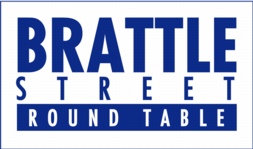

Government Works
Policy Analyst's ToolBox
Consultation ToolBox
Communications ToolBox
Registration and Documents
Special Pricing
Story of the Red Triangle
Ideas for a Leg Programme
Facilitation 101
The Story of the Red Triangle
Ideas for giving management the information they want and need
Red triangles represent all of those different influences and demands that come from on high.
The Idea
A red triangle from a Minister's office could be a description of the problem or even a directive on how to fix a problem. As that red triangle filters down towards you, each layer of management will also add their ideas to the issue, so that by the time it reaches you, the directive for work can represent an amalgam of many different points of view and demands: a whole slew of red triangles. You may feel that you have very little room to maneuver.
There are two extremes on how to deal with all of these red triangles:- You can apply rigorous analysis to the issue and send back up through the system options and recommendations that you believe are best supported, and ignore the red triangles; or,
- You can accept the parameters imposed by the red triangles, give to management what you believe they expect to receive, and ignore analysis.
Corollaries
- Best Guess You may never know what the higher-up triangles are, so you will be forced to guess on best information available.
- Solid Advice Get into other people's shoes, but don't do a mind transplant. You are counted on for solid advice based on your expert analysis, not for second-guessing managers or politicians.
- Times Change The triangle you first experience could change by the time you are ready to propose something. Stay ahead of the changing triangles and always have a contingency plan.
- Time Allocation Allow sufficient time for the information to travel up ... and then travel down for revisions. This could happen three or four times. Note that approval is an iterative process where all managers will check what you write against all known triangles.
- Two frames of reference Red triangles could be substantive (policy oriented) or value-laden (political or ego-driven): Try to look for the meaning of a red triangle on both levels.
- Bread Crumbs Working within your black box, it is possible that your exploration of the issues will take you in new directions. Your communications and recommendations should provide a trail of bread crumbs for others to follow and understand.



Brattle Street Round Table . 200-440 Laurier Ave West, Ottawa, Ontario, Canada .
Tel: 613.782.2312 . e-mail: learn@brattlestreet.ca
This and all others pages on this site are Copyright 2003 by Brattle Street Round Table